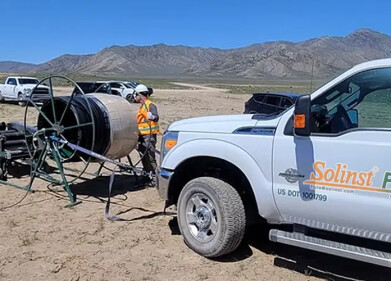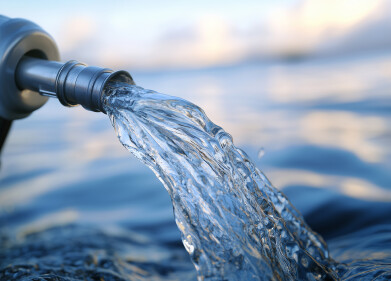Business News
Can Offshore Wind Farms Float?
Aug 01 2017
Traditionally, offshore wind farms have needed to be planted into the sea bed, requiring intensive labour costs, difficult conditions and a specific location with relatively shallow water.
However, the world’s largest floating wind farm is due to be built off the east coast of Scotland, cementing the nation’s place at the forefront of the European renewable industry and hopefully providing a blueprint for other countries to copy around the world.
56,000 homes
The idea to install the first floating wind farm in the world was first mooted back in 2015 under the name Hywind, with a scheduled completion date of this year. With turbines created by Norwegian fossil fuel company Statoil, the plan showed that the declining oil and gas industry could diversify its operations and move into renewable territory. At present, five of the turbines are waiting to be towed across the North Sea to the Scottish coast.
Learning from Statoil’s example, Kincardine Offshore Windfarm Ltd have now signalled their intention to follow a similar approach by creating a further eight six-megawatt turbines at a location 10 miles removed from Aberdeen. As well as creating 110 jobs for the industry, the farm will also become the largest of its kind in the world and will produce enough electricity to power 56,000 homes.
The project has been granted planning permission by the Scottish government and although no commencement date has yet been forthcoming, it’s hoped that the farm will be in place before long. The announcement comes not long after the ninth Air Quality and Emissions Event, which took place in Telford back in May and targeted ways of cleaning up the UK’s polluted airwaves.
Scotland showing the way
Scotland has pledged to garner half of its total energy consumption from renewable means by 2030, and Energy Minister Paul Wheelhouse sees the new farm as a key component of meeting that target.
“Our commitment to supporting low-carbon energy is outlined in our new draft Energy Strategy which sets out next steps and how we will continue to transition to a low-carbon economy, with the offshore wind sector to take an increasingly influential role,” he said. “With 25% of Europe’s offshore wind potential, and through development with due regard to our natural environment, Scotland is uniquely and strongly positioned to maximise the economic and environmental benefits that the technology can deliver, which will help us progress towards our carbon emission reduction targets.”
If successful, the technology could also help other countries around the world, as well. Though the North Sea has long been a target due to its relatively shallow waters (traditional offshore wind farms require depths of no more than 40m), these new floating specimens could provide the blueprint for places such as the United States, Japan and South-East Asia.
“The continued development of floating turbines in Scotland is encouraging as it could enable us and other nations to secure even more clean power from offshore wind,” explained Lang Banks, director of WWF Scotland. “One thing is clear, if we are to meet our future climate and energy targets we will certainly need both more onshore and offshore wind in the future.”
Digital Edition
AET 28.4 Oct/Nov 2024
November 2024
Gas Detection - Go from lagging to leading: why investment in gas detection makes sense Air Monitoring - Swirl and vortex meters will aid green hydrogen production - Beyond the Stack: Emi...
View all digital editions
Events
Jan 20 2025 San Diego, CA, USA
Carrefour des Gestions Locales de L'eau
Jan 22 2025 Rennes, France
Safety, Health & Wellbeing LIVE
Jan 22 2025 Manchester, UK
Jan 25 2025 San Diego, CA, USA
Jan 29 2025 Tokyo, Japan



















